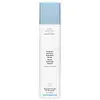What's inside
What's inside
 Key Ingredients
Key Ingredients

 Benefits
Benefits

 Concerns
Concerns

No concerns
 Ingredients Side-by-side
Ingredients Side-by-side

Water
Skin ConditioningCoconut Alkanes
EmollientAmmonium Acryloyldimethyltaurate/Vp Copolymer
Glycerin
HumectantPentylene Glycol
Skin ConditioningSclerocarya Birrea Seed Oil
HumectantWheat Amino Acids
Skin ConditioningAnanas Sativus Fruit Extract
Skin ConditioningBerberis Vulgaris Root Extract
AntimicrobialCitrullus Lanatus Fruit Extract
Skin ConditioningLens Esculenta Fruit Extract
Skin ConditioningPyrus Malus Fruit Extract
Skin ConditioningCoco-Caprylate/Caprate
EmollientPanthenol
Skin ConditioningSodium PCA
HumectantSodium Hyaluronate Crosspolymer
HumectantDipotassium Glycyrrhizate
HumectantNiacinamide
SmoothingCyclodextrin
AbsorbentSodium Hyaluronate
HumectantSodium Lactate
BufferingPhenoxyethanol
PreservativeHydroxyproline
Skin ConditioningTrisodium Ethylenediamine Disuccinate
Citric Acid
BufferingCaprylyl Glycol
EmollientChlorphenesin
AntimicrobialEthylhexylglycerin
Skin ConditioningWater, Coconut Alkanes, Ammonium Acryloyldimethyltaurate/Vp Copolymer, Glycerin, Pentylene Glycol, Sclerocarya Birrea Seed Oil, Wheat Amino Acids, Ananas Sativus Fruit Extract, Berberis Vulgaris Root Extract, Citrullus Lanatus Fruit Extract, Lens Esculenta Fruit Extract, Pyrus Malus Fruit Extract, Coco-Caprylate/Caprate, Panthenol, Sodium PCA, Sodium Hyaluronate Crosspolymer, Dipotassium Glycyrrhizate, Niacinamide, Cyclodextrin, Sodium Hyaluronate, Sodium Lactate, Phenoxyethanol, Hydroxyproline, Trisodium Ethylenediamine Disuccinate, Citric Acid, Caprylyl Glycol, Chlorphenesin, Ethylhexylglycerin
Water
Skin ConditioningGlycerin
HumectantButylene Glycol
HumectantPhenyl Trimethicone
Skin ConditioningPropanediol
SolventSucrose
HumectantHydroxyethyl Urea
HumectantAlteromonas Ferment Extract
Skin ConditioningHydrolyzed Rice Extract
Skin ConditioningAcetyl Glucosamine
Skin ConditioningTrehalose
HumectantAlgae Extract
EmollientCaffeine
Skin ConditioningCholesterol
EmollientAloe Barbadensis Leaf Water
MaskingSodium Hyaluronate
HumectantPentaerythrityl Tetraethylhexanoate
EmollientDextrin Palmitate
EmulsifyingAcrylates/C10-30 Alkyl Acrylate Crosspolymer
Emulsion StabilisingSorbitol
HumectantSodium Polyaspartate
HumectantTocopheryl Acetate
AntioxidantCarbomer
Emulsion StabilisingDehydroxanthan Gum
Emulsion StabilisingCitric Acid
BufferingTetrahexyldecyl Ascorbate
AntioxidantBenzophenone-4
UV AbsorberPentaerythrityl Tetra-Di-T-Butyl Hydroxyhydrocinnamate
AntioxidantSodium Hydroxide
BufferingSodium Citrate
BufferingDisodium EDTA
BHT
AntioxidantChlorphenesin
AntimicrobialPhenoxyethanol
PreservativeCI 14700
Cosmetic ColorantCI 19140
Cosmetic ColorantWater, Glycerin, Butylene Glycol, Phenyl Trimethicone, Propanediol, Sucrose, Hydroxyethyl Urea, Alteromonas Ferment Extract, Hydrolyzed Rice Extract, Acetyl Glucosamine, Trehalose, Algae Extract, Caffeine, Cholesterol, Aloe Barbadensis Leaf Water, Sodium Hyaluronate, Pentaerythrityl Tetraethylhexanoate, Dextrin Palmitate, Acrylates/C10-30 Alkyl Acrylate Crosspolymer, Sorbitol, Sodium Polyaspartate, Tocopheryl Acetate, Carbomer, Dehydroxanthan Gum, Citric Acid, Tetrahexyldecyl Ascorbate, Benzophenone-4, Pentaerythrityl Tetra-Di-T-Butyl Hydroxyhydrocinnamate, Sodium Hydroxide, Sodium Citrate, Disodium EDTA, BHT, Chlorphenesin, Phenoxyethanol, CI 14700, CI 19140
 Reviews
Reviews

Ingredients Explained
These ingredients are found in both products.
Ingredients higher up in an ingredient list are typically present in a larger amount.
Chlorphenesin is a synthetic preservative. It helps protect a product against bacteria in order to extend shelf life. In most cases, Chlorphenesin is paired with other preservatives such as phenoxyethanol and caprylyl glycol.
Chlorphenesin is a biocide. This means it is able to help fight the microorganisms on our skin. It is also able to fight odor-releasing bacteria.
Chlorphenesin is soluble in both water and glycerin.
Studies show Chlorphenesin is easily absorbed by our skin. You should speak with a skincare professional if you have concerns about using Chlorphenesin.
Learn more about ChlorphenesinCitric Acid is an alpha hydroxy acid (AHA) naturally found in citrus fruits like oranges, lemons, and limes.
Like other AHAs, citric acid can exfoliate skin by breaking down the bonds that hold dead skin cells together. This helps reveal smoother and brighter skin underneath.
However, this exfoliating effect only happens at high concentrations (20%) which can be hard to find in cosmetic products.
Due to this, citric acid is usually included in small amounts as a pH adjuster. This helps keep products slightly more acidic and compatible with skin's natural pH.
In skincare formulas, citric acid can:
While it can provide some skin benefits, research shows lactic acid and glycolic acid are generally more effective and less irritating exfoliants.
Most citric acid used in skincare today is made by fermenting sugars (usually from molasses). This synthetic version is identical to the natural citrus form but easier to stabilize and use in formulations.
Read more about some other popular AHA's here:
Learn more about Citric AcidGlycerin is already naturally found in your skin. It helps moisturize and protect your skin.
A study from 2016 found glycerin to be more effective as a humectant than AHAs and hyaluronic acid.
As a humectant, it helps the skin stay hydrated by pulling moisture to your skin. The low molecular weight of glycerin allows it to pull moisture into the deeper layers of your skin.
Hydrated skin improves your skin barrier; Your skin barrier helps protect against irritants and bacteria.
Glycerin has also been found to have antimicrobial and antiviral properties. Due to these properties, glycerin is often used in wound and burn treatments.
In cosmetics, glycerin is usually derived from plants such as soybean or palm. However, it can also be sourced from animals, such as tallow or animal fat.
This ingredient is organic, colorless, odorless, and non-toxic.
Glycerin is the name for this ingredient in American English. British English uses Glycerol/Glycerine.
Learn more about GlycerinPhenoxyethanol is a preservative that has germicide, antimicrobial, and aromatic properties. Studies show that phenoxyethanol can prevent microbial growth. By itself, it has a scent that is similar to that of a rose.
It's often used in formulations along with Caprylyl Glycol to preserve the shelf life of products.
Sodium Hyaluronate is hyaluronic acid's salt form. It is commonly derived from the sodium salt of hyaluronic acid.
Like hyaluronic acid, it is great at holding water and acts as a humectant. This makes it a great skin hydrating ingredient.
Sodium Hyaluronate is naturally occurring in our bodies and is mostly found in eye fluid and joints.
These are some other common types of Hyaluronic Acid:
Learn more about Sodium HyaluronateWater. It's the most common cosmetic ingredient of all. You'll usually see it at the top of ingredient lists, meaning that it makes up the largest part of the product.
So why is it so popular? Water most often acts as a solvent - this means that it helps dissolve other ingredients into the formulation.
You'll also recognize water as that liquid we all need to stay alive. If you see this, drink a glass of water. Stay hydrated!
Learn more about Water